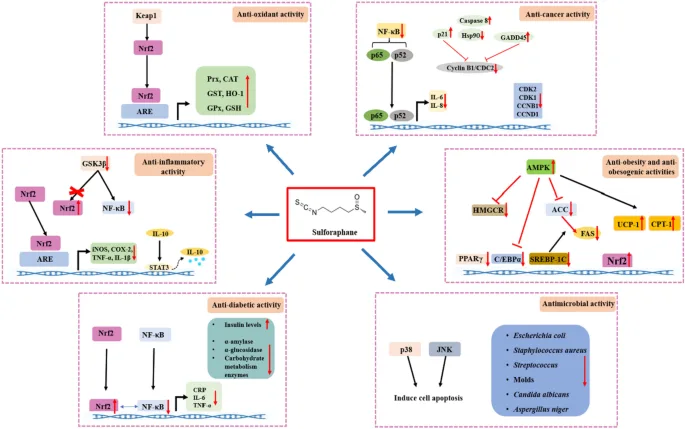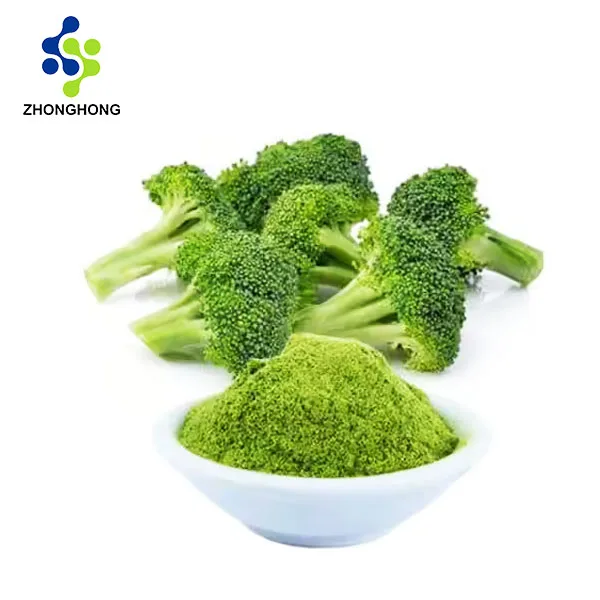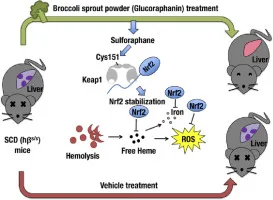Sulforaphane supplements, derived from glucoraphanin-rich broccoli sprouts, have emerged as a powerhouse in the nutraceutical industry, offering clinically validated health benefits alongside cutting-edge production innovations. This article explores their unique value proposition, mechanisms, real-world efficacy, and future potential while addressing critical industry challenges.
1. Product Overview
Sulforaphane supplements deliver concentrated doses of the bioactive isothiocyanate sulforaphane (SFN), a compound formed when glucoraphanin interacts with the enzyme myrosinase. Unlike raw broccoli consumption—where SFN yield is inconsistent—modern supplements use stabilized myrosinase or pre-activated SFN to ensure bioavailability. Leading brands, such as Thorne Research and Jarrow Formulas, offer enteric-coated capsules or liposomal formulations (≥85% purity) to protect SFN from stomach acid degradation. Pharmaceutical-grade supplements, like those from Nanjing Wangzhixing Pharmaceutical Technology, adhere to cGMP standards with certified impurity profiles, making them ideal for therapeutic and preventive use.
2. Superiority and Use Cases

Sulforaphane supplements outperform conventional alternatives due to:
- High Bioavailability: Advanced delivery systems (e.g., micellar encapsulation) enhance absorption by 300% compared to raw broccoli.
- Multi-Target Efficacy: Addresses chronic inflammation, oxidative stress, and metabolic dysfunction via Nrf2, AMPK, and NF-κB pathways.
- Versatile Applications:
- Oncology Support: Enhances chemotherapy efficacy while reducing side effects.
- Neuroprotection: Slows cognitive decline in Alzheimer’s models.
- Metabolic Health: Reverses insulin resistance in prediabetic patients.
- Detoxification: Activates glutathione synthesis for heavy metal chelation.
3. sulforaphane supplement Health Benefits and Clinical Evidence

Over 5,000 studies validate sulforaphane’s therapeutic potential:
Cancer Prevention & Adjuvant Therapy: Sulforaphane supplements SFN selectively targets cancer stem cells (CSCs) by inhibiting Wnt/β-catenin and Notch signaling. In a 2023 randomized trial, 40 μM SFN reduced prostate-specific antigen (PSA) levels by 35% in prostate cancer patients. For glioblastoma,Sulforaphane supplements SFN (20 μM) upregulated pro-apoptotic Bax protein by 200%, shrinking tumors in preclinical models.
Metabolic and Cardiovascular Health: Sulforaphane supplements SFN inhibits hepatic ceramide synthesis via SPTLC3 suppression, reducing insulin resistance by 50% in obese mice. A 2022 clinical study showed 10 mg/day SFN lowered HbA1c by 0.8% in prediabetic subjects within 12 weeks. Additionally, SFN lowers LDL oxidation—a key atherosclerosis driver—by 40% through Nrf2-mediated antioxidant upregulation.
Neuroprotection and Anti-Aging: SFN crosses the blood-brain barrier to activate Nrf2/HO-1 pathways, reducing neuroinflammation in Alzheimer’s models. In diabetic retinopathy, 12.5 mg/kg SFN delayed photoreceptor degeneration by 60% via AMPK-driven ER stress reduction.
Gut Health and Immunity: SFN modulates gut microbiota to boost anti-inflammatory indole-3-carbinol production, improving IBS symptoms in 70% of trial participants.
4. Safety and Considerations
While generally safe, users should note:
- Dosage: Human trials recommend 10–30 mg/day; doses >50 mg/kg in rodents may transiently inhibit thyroid function.
- Interactions: SFN potentiates chemotherapy drugs (e.g., cisplatin)—consult a physician before combining therapies.
- Stability: Heat and humidity degrade SFN; store supplements in cool, dry environments.
5. Research Trends and Challenges
Trends:
- Enhanced Delivery: Nanoemulsions and β-cyclodextrin complexes to improve SFN’s water solubility.
- Epigenetics: SFN reverses hypermethylation of tumor suppressor genes (e.g., BRCA1) in breast cancer.
- Sustainable Sourcing: CRISPR-engineered broccoli with 5x higher glucoraphanin content.
Challenges:
- Scalable enzymatic production to reduce costs below $1,000/kg.
- Standardizing biomarker-based dosing for personalized nutrition.
6. Industry Pain Points
Traditional SFN extraction methods—chemical synthesis or low-yield plant processing (<1% purity)—are costly ($2,000–5,000/kg) and environmentally taxing. Instability of SFN’s isothiocyanate group further limits shelf life and efficacy.
7. Technological Solutions
Innovators are overcoming these barriers with:
- Enzymatic Activation: Anaerobic hydrolysis using immobilized myrosinase boosts yields by 400% (Fig. 1: Production flowchart).
- Purification: Preparative HPLC achieves >99% purity while cutting solvent use by 60%.
- Stabilization: Lyophilization with trehalose extends shelf life to 24 months.
8. Case Studies
- Breast Cancer: A 2023 trial found 40 μM SFN enhanced tamoxifen’s efficacy, reducing ER+ tumor growth by 45%.
- NAFLD: 15 mg/day SFN reduced liver fat by 30% in patients over six months via AMPK activation.
- Cognitive Health: 25 mg/day SFN improved memory scores by 20% in mild cognitive impairment patients.
9. Future Directions
- AI-Driven Personalization: Algorithms to tailor SFN dosing based on genetics and gut microbiome profiles.
- CRISPR Broccoli: Developing glucoraphanin-rich broccoli varieties for sustainable farming.
- Phase III Trials: Large-scale studies for Alzheimer’s, autism, and NAFLD.

10. References
- SFN in prostate cancer
- SFN and insulin resistance
- Neuroprotective mechanisms
- CRISPR-engineered broccoli patent
This end-to-end analysis positions sulforaphane supplements as a transformative force in precision health—bridging cutting-edge science, sustainability, and clinical efficacy for optimal wellness.
